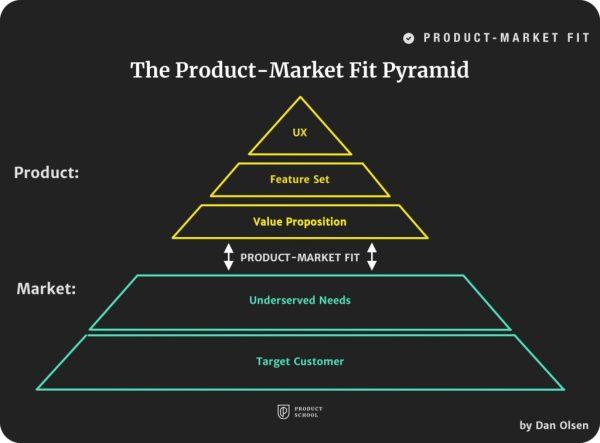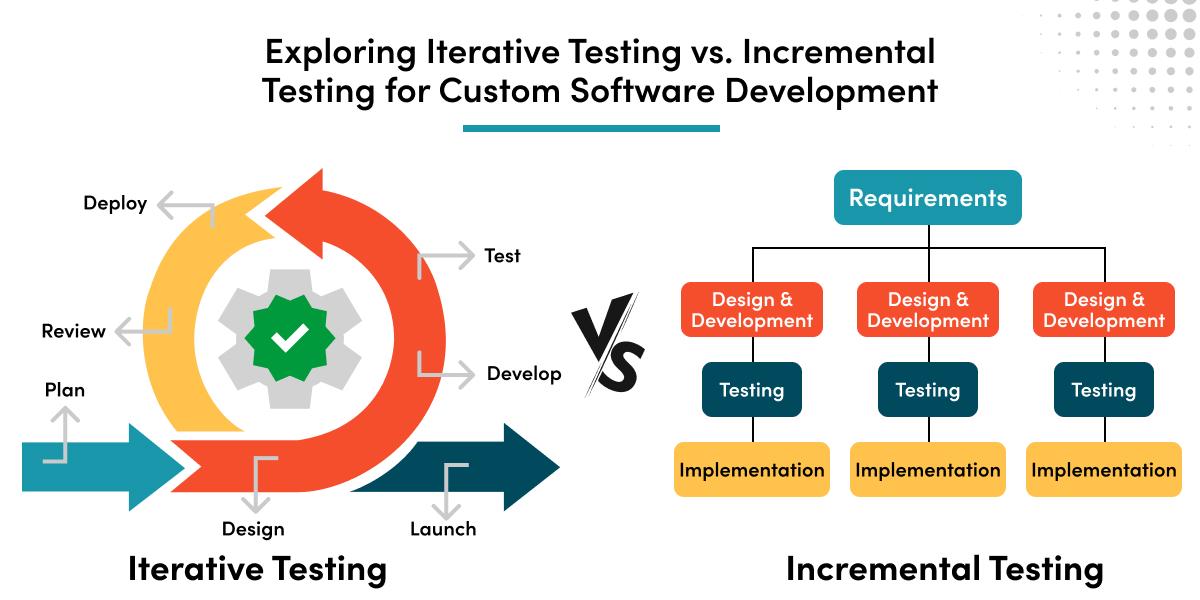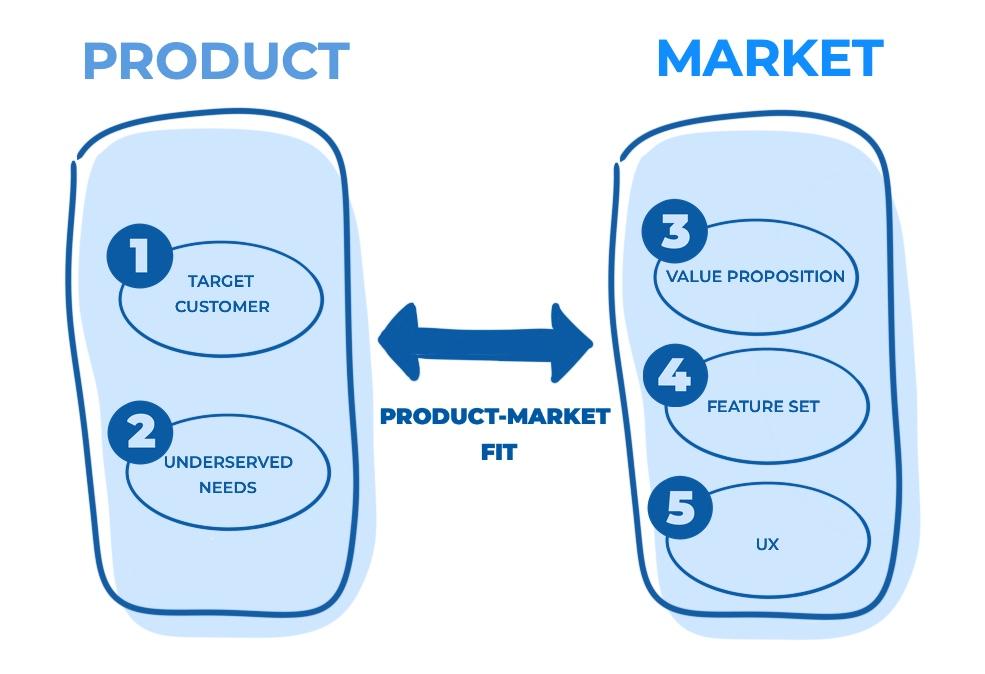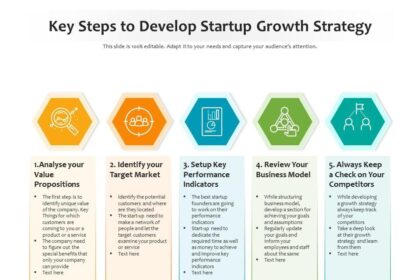In the ever-evolving landscape of entrepreneurship, every startup aspires to discover that elusive sweet spot where their products resonate perfectly with market demands. This phenomenon, known as product-market fit, stands as a critical milestone on the journey to business success. But what does it truly mean to achieve this balance? Navigating product-market fit is not merely a process; it’s an art that intertwines deep consumer insights with innovative solutions. In this article, we will explore the fundamental principles of product-market fit, the common pitfalls to avoid, and the strategies that can guide businesses toward this coveted alignment. Whether you’re a seasoned entrepreneur or just starting, understanding the nuances of product-market fit could be the key that unlocks your venture’s potential and paves the way for sustainable growth. Join us as we delve into the core of this essential concept and equip you with the tools to master it.
Understanding the Foundations of Product-Market Fit
To truly grasp the essence of product-market fit, one must first understand its core components. At its heart, it’s about aligning your product offerings with the genuine needs of your target audience. This alignment isn’t merely a business strategy—it’s a commitment to empathy and insight. Identifying the right market involves:
- Researching customer pain points: Understanding what challenges your potential customers face.
- Defining user personas: Creating detailed profiles of your ideal customers.
- Assessment of competitive landscape: Evaluating what solutions currently exist and where gaps lie.
Once you’ve honed in on your target market, the next step is iterative testing. This phase involves adapting your product based on real user feedback, ensuring it resonates well with your audience. A structured way to map your journey can include a simple table that outlines key metrics and goals:
| Metric | Goal | Status |
|---|---|---|
| Customer Satisfaction | 85% positive feedback | In progress |
| User Retention | 70% after 3 months | Achieved |
| Market Penetration | 10% in the first year | On track |
This table helps you maintain clarity and purpose as you pivot and iterate toward the elusive but rewarding goal of product-market fit.

Identifying Your Target Audience and Their Needs
Understanding who your customers are and what drives their purchasing decisions is crucial for achieving a successful product-market fit. Start by conducting thorough market research to uncover demographics and psychographics of your potential audience. Consider gathering data that outlines:
- Age Group: Knowing the age bracket helps tailor your messaging.
- Location: Geographic trends can influence preferences and buying patterns.
- Interests and Hobbies: Understanding what your audience enjoys can guide product features and marketing approaches.
- Pain Points: Identifying challenges faced by your target audience assists in highlighting how your product can provide solutions.
Utilizing surveys, social media analytics, and direct customer interviews can yield invaluable insights into the needs of your target audience. Once you gather this data, it’s essential to create customer personas—fictional representations that encapsulate the characteristics of your diverse audience segments. A well-structured table can help visualize this:
| Customer Persona | Age | Key Needs |
|---|---|---|
| Tech-Savvy Millennial | 25-35 | Easy-to-use tech solutions and sustainability. |
| Health-Conscious Parent | 30-45 | Safe, nutritious products for kids and family-oriented services. |
| Budget-Conscious Student | 18-24 | Affordable options and value-for-money propositions. |
With a deep understanding of your audience, you can now align your product offerings with their needs, paving the way for greater market resonance and eventual success. Remember, keeping the lines of communication open with your customers allows for continuous feedback and adaptation, reinforcing a dynamic relationship that fosters loyalty and engagement.

Iterative Testing: Refining Your Offerings for Alignment
To achieve a successful product-market fit, iterative testing acts as an essential mechanism for fine-tuning your offerings. This systematic approach allows businesses to gather valuable insights from customer feedback and usage patterns, leading to adjustments that resonate more profoundly with their target audience. Key benefits of iterative testing include:
- Enhanced Customer Understanding: By actively engaging with users, companies gain insights into their preferences and pain points.
- Minimized Risk: Testing hypotheses in small batches can mitigate financial loss by avoiding large-scale rollouts of untested ideas.
- Constant Evolution: An iterative process encourages a culture of ongoing improvement rather than static offerings.
When conducting these tests, leveraging data analytics and user feedback is paramount. An effective strategy often involves creating a feedback loop, where customer responses inform product updates, which are then retested. This cycle not only accelerates the learning process but also helps in aligning products closer to market demands. Consider the following table which summarizes the iterative testing phases:
| Phase | Description |
|---|---|
| 1. Hypothesis Formation | Identify key assumptions about customer needs and market fit. |
| 2. Prototype Development | Create a minimal viable product (MVP) to test your hypothesis. |
| 3. Data Collection | Gather quantitative and qualitative feedback from users. |
| 4. Analysis & Refinement | Analyze data and make necessary adjustments to the product. |
| 5. Re-Test | Run another round of testing with improved offerings. |

Measuring Success: Metrics that Matter for Product-Market Fit
Understanding the effectiveness of your product-market fit requires careful evaluation of key metrics that provide insight into customer engagement and satisfaction. Focus on metrics that reflect real user interactions, such as customer acquisition cost (CAC) and customer lifetime value (CLV). These figures can illuminate how much you are spending to acquire each customer versus how much revenue they generate over their relationship with your brand. Additionally, consider tracking your net promoter score (NPS) to gauge customer loyalty and satisfaction. A high NPS indicates that users are not just buying your product; they are likely to recommend it to others, which is a strong signal of market fit.
Another vital metric is the conversion rate across various stages of your marketing funnel. This includes the percentage of website visitors who become leads, and leads who convert to paying customers, giving you insight into potential bottlenecks. Implementing tools to analyze these metrics can provide actionable data points. Below is a comparison of several important metrics in a simple table format:
| Metric | Definition | Why It Matters |
|---|---|---|
| CAC | Cost to acquire a new customer | Helps determine marketing efficiency |
| CLV | Total revenue from a customer over their lifecycle | Indicates long-term business viability |
| NPS | Customer loyalty measurement | Shows customer satisfaction and advocacy |
| Conversion Rate | Percentage of visitors who complete a desired action | Identifies effectiveness of sales processes |
The Way Forward
As we reach the conclusion of our exploration into the intricate journey of navigating product-market fit, it’s clear that this fundamental concept is not merely a stepping stone but a cornerstone of sustainable business success. The path may be fraught with challenges, but the rewards for those who persevere are immense. By understanding and adapting to the evolving needs of your target audience, continuously iterating on your offerings, and fostering an agile mindset within your organization, you can create a dynamic synergy that propels your business forward.
Remember, product-market fit isn’t a final destination—it’s a continual process of discovery and adaptation. Embrace the insights shared here, leverage them to refine your strategies, and embark on the journey with confidence. In the ever-changing landscape of commerce, the ability to align your products with the pulse of the market will not only determine your success but also pave the way for meaningful connections between your solutions and the customers who seek them. The road ahead is yours to shape; now, go forth and navigate with intention.



